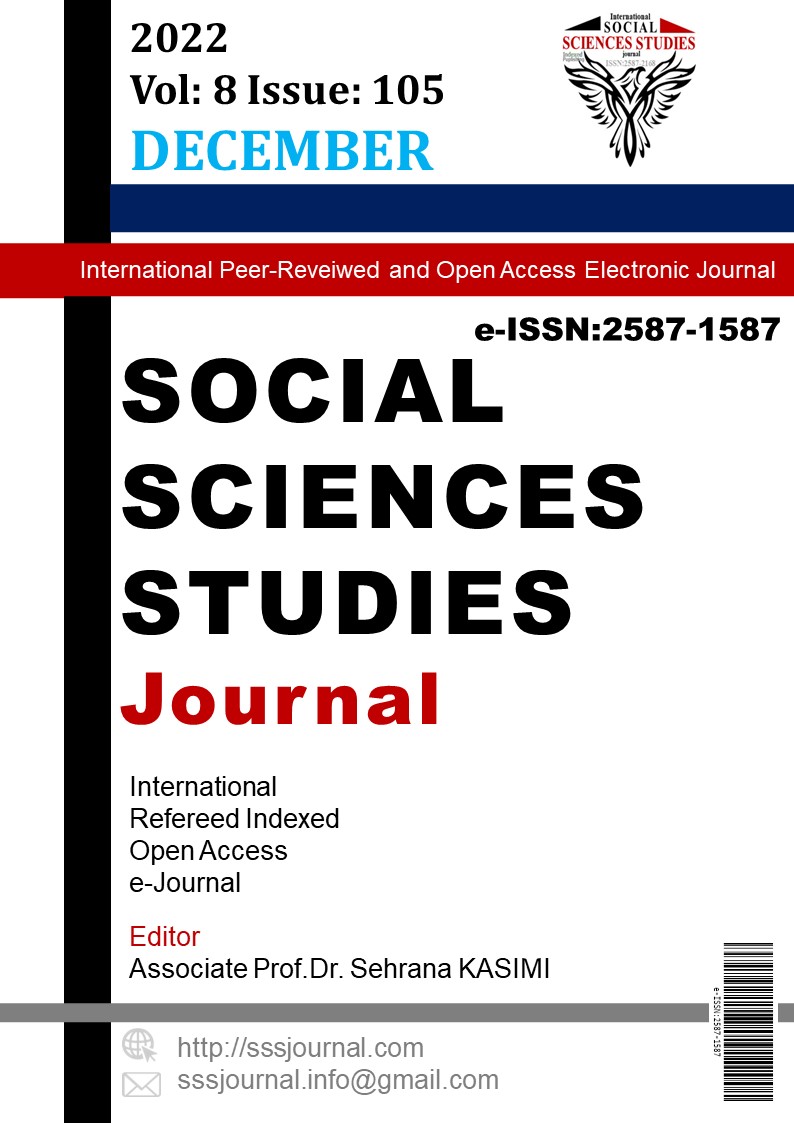Matematik Dersinde Dört İşlem ve İşlem Önceliğine Yönelik Akıllı Tahta İçin Geliştirilen Eğitici Oyun Kullanımının Öğrencilerin Akademik Başarısına Etkisi
Author :
Abstract
Bu araştırmanın amacı, 7.sınıf matematik dersinde dört işlem ve işlem önceliğine yönelik akıllı tahta için geliştirilen eğitici oyunun kullanılmasının öğrencilerin akademik başarılarına etkisini incelemektir. Araştırmanın çalışma grubu Ankara ilinde bulunan bir devlet ortaokulunda öğrenim gören 30 öğrenciden oluşmuştur. Araştırma tek grup ön-test son-test deneysel desen modeli kullanılarak gerçekleştirilmiştir. Araştırmanın verileri araştırmacılar tarafından geliştirilen güvenirliği test edilmiş başarı testinin uygulama öncesi ve sonrasında ön-test ve son-test olarak uygulanmasıyla toplanmıştır. Ön-testten sonra akıllı tahta kullanılarak öğrencilere eğitici oyun oynatılmıştır. Öğretim sonunda başarı testi son-test olarak tekrar gruba uygulanmıştır. Veri analizi için Wilcoxon işaretli sıralar testi kullanılmıştır. Araştırma sonucunda son-test lehine bulunan anlamlı farklılık, akıllı tahta için geliştirilen eğitici oyun kullanımının akademik başarıyı artırdığını göstermiştir.
Keywords
Abstract
The purpose of this research is to examine the effect of using the educational game developed for the smart board for four operations and operation priorities in the 7th grade mathematics course on the academic achievement of students. The study group of the research consisted of 30 students studying at a public secondary school in Ankara. The research was carried out using a single group pre-test post-test experimental design model. The data of the study were collected by applying the reliability-tested achievement test developed by the researchers as pre-test and post-test before and after the application. After the pre-test, an educational game was played to the students using a smart board. At the end of the instruction, the achievement test was applied to the group again as a post-test. Wilcoxon signed-rank test was used for data analysis. As a result of the research, the significant difference in favor of the post-test showed that the use of educational games developed for the smart board increased academic achievement.
Keywords
- 1. Ali, I., Khan, M. A. & Hamid, K. (2010). A Study of university students’ motivation and its relationship with their academic performance. International Journal of Business and Management, 4, 80-88.
- 2. Betcher, B. & Lee, B. (2009). The Interactive Whiteboard Revolution Teaching with IWSs. ACER Press, Australia.
- 3. Brewster, C. & Fager, J. (2000). Increasing student engagement and motivation: From time on task to homework. Northwest Regional Educational Laboratory.
- 4. Brown, H. D. (1994). Principles of language learning and teaching. Prentice Hall Regents Inc., USA.
- 5. Çoklar, A. N. ve Tercan, İ. (2014). Opinions of teachers toward the use of smart boards. Elementary Education Online, 13(1), 48-61.
- 6. DeVelles, R., F. (1991). Scale Development: Theory and Applications. London: SAGE Publications.
- 7. Gündüz, S. ve Kutluca, T. (2019). A meta-analysis study on the effect of the use of smart board in the teaching of mathematics and science to students’ academic achievements. Journal of Computer and Education Research, 7(13), 183-204.
- 8. İncekara, H. ve Taşdemir, Ş. (2019). Matematikte dört ı̇şlem becerisinin geliştirilmesi için dijital oyun tasarımı ve öğrenci başarısına etkileri. Gazi Mühendislik Bilimleri Dergisi, 5 (3), 227-236.
- 9. Kasvi J. (2000). Not Just Fun and Games - Internet Games as a Training Medium. Cosiga - Learning with Computerised Simulation Games. pp.23-34.
- 10. Kebritchi, M. (2010). Factors affecting teachers’ adoption of educational computer games: a case study. British Journal of Educational Technology. 41 (2), 256–270.
- 11. Kennewell, S. & Beauchamp, G. (2007). The features of interactive whiteboards and their influence on learning. Learning, Media and Technology, 32 (3), pp. 227–241.
- 12. Korkusuz, M. E. ve Karamete, A. (2013). Eğitsel oyun geliştirme modelleri, Necatibey Eğitim Fakültesi Elektronik Fen ve Matematik Eğitimi Dergisi, 7 (2), 78-109.
- 13. Malone, T. W. (1980). What Makes Things Fun To Learn? A Study Of Intrinsically Motivating Computer Games. ProQuest Information & Learning.
- 14. Önal, N. (2017). Use of interactive whiteboard in the mathematics classroom: students’ perceptions within the framework of the technology acceptance model. International Journal of Instruction, 10 (4), 67-86.
- 15. Önal, N. ve Göloğlu Demir, C. (2017). The use of the interactive whiteboard in mathematics and mathematics lessons from the perspective of Turkish middle school students. International Journal of Higher Education, 6 (3), 195-208.
- 16. Patton, M.Q. (2002). Qualitative Research and Evaluation Methods. London: Sage.
- 17. Pivec, M. & Kearney, P. (2007). Games for learning and learning from games. Informatica, 31, 419-423.
- 18. Ryan, R. M. & Deci, E. L. (2000). İntrinsic and extrinsic motivations: Classic definitions and new directions contemporary. Educational Psychology, 25, 54–67.
- 19. Somyürek, S., Atasoy. B. ve Özdemir, S. (2009). Board’s IQ: What makes a board smart?. Computers and Education, 53 (2), 368-374.
- 20. Taşdan, B. (2021). Türkiye’de matematik eğitiminde akıllı tahta kullanımını ı̇nceleyen araştırmaların betimsel ı̇çerik analizi. Buca Eğitim Fakültesi Dergisi, 52, 724-743.
- 21. Topçu. H., Küçük, S. ve Göktaş, Y. (2014). Sınıf öğretmeni adaylarının ilköğretim matematik öğretiminde eğitsel bilgisayar oyunlarının kullanımına yönelik görüşleri. Turkish Journal of Computer and Mathematics Education, 5 (2), 119-136.
- 22. Turan, B. (2014). Smart board ı̇n mathematics education, the use of cartoon characters ı̇mpact on student success. Procedia - Social and Behavioral Sciences, 143, 809 – 815.
- 23. Ulaş, A. ve Tuna, A. (2020). Matematik öğretiminde akıllı tahta kullanımının öğrencilerin akademik başarılarına etkisi. Online Journal of Mathematics, Science and Technology Education (OJOMSTE), 1 (1), 31–40.
- 24. Uluçay, İ., S. ve Çakır, H. (2014). İnteraktı̇f oyunların matematı̇k öğretı̇mı̇nde kullanılması üzerı̇ne araştırmaların ı̇ncelenmesı̇. Eği̇ti̇m Teknoloji̇si̇ Kuram ve Uygulama, 4 (1), 13-34.
- 25. Ur, P. (1996). A Course in Language Teaching. University of Cambridge New York.
- 26. Vallerand, R. J. (2004). İntrinsic and extrinsic motivations in sport. Encyclopedia of aplied Psychology, Volume 2. Elsevier Inc.
- 27. Vallerand, R. J., Pelletier L. G., Blais, M.R., Briere, N.M., Senecal, C., & Vallieres, E. F. (1992). The academic motivation scale: a measure of intrinsic, extrinsic, and amotivation in education. Educational, and Psychological Measurement, 52, 1003-1017.
- 28. Yıldırım, A. ve Şimşek, H. (2006). Sosyal Bilimlerde Nitel Araştirma Yöntemleri. Ankara: Seçkin.
